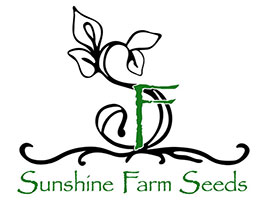Welcome to the 2017 Growing Season
What a year, it started out with a heavy dump of snow on unfrozen ground in early January, a great snow mulch for some of the intermediate hardy vegetables like Tuscan Black Kale. These had been selected and left in the garden for seed crop as the weather has been moderating for several years now and the biennial kale should be producing flowers by May and a seed crop by August. This is the proverbial ‘counting your chickens before the eggs hatch’ because by mid March the wild Mule Deer had chewed them down to the ground. This is how things are interconnected, we lost our beloved elder dog Jack the previous winter, Jack was very territorial and kept these garden raiders from our fields. Consequentially, because we lost Jack two years ago, we are unable to offer you Tuscan Black Kale seed this year. This year, a cold snap has already given us some minus 20 C, so much for the moderated temperatures, but we’ll see how some of our winter mulches managed on the crops they were meant to protect. Then it’s a matter of seeing how our new pup does at keeping the deer at bay.
The connections needed to produce vegetables and then seed generally go unnoticed or unconsidered until they don’t happen. The growing season in 2016 was the strangest in our 29 years on the land here. April and May were unseasonably warm, even hot, soil moisture was evaporated and typical seedings needed a supplemental irrigation to prevent drying out. June and July were wet and cooler than normal, August was warmer but didn’t really get a chance to develop good ripening heat and then an early frost in September precluded a good season for the tomato pepper eggplant, Solanceae family. Many seed varieties took longer than usual to ripen, potatoes were undersized, brassicas were slow to develop, lettuces took longer to flower, it was just a weird year. The successes this year will be built into the genetics of those fruits and vegetables selected for seed and in the coming age of climate and weather unpredictability, hopefully they will be better equipped to be productive in changing conditions.
We are all connected, not just as humans, but all life on Earth. We need to realize how we impact our connections, from the decline of species, to the ‘dead’ zones in our oceans, the degradation of soils and among many other things, the reduction of the quality of the air and water, the necessities of life. The collective wisdom of humans and their extensions of artificial intelligence have the ability to see and deal with the problems we have created. It is disturbing that the will is not foremost to protect this beautiful life on Earth. Does greed ‘Trump’ the sensibilities of the right things to do? As gardeners and farmers, we know one right thing to do is to plant our foods, medicines, plants which give us a connection to Earth’s beauty and bounty.
Some of the new offerings of seed this year include the Touchstone Gold Beet, the classic golden fleshed beet; the Golden Snow Pea and the Desiree Snow Pea, beautiful colourful additions to any stir fry; the Petrowski Turnip, a Heritage variety from Northern Europe, small, 7-10 cm., mildly sweet pale yellow flesh reminiscent of the larger rutabaga; the Green Luobo Radish, a heritage variety from Northern China, spicy and sweet with green flesh; Romanesco Fennel, a classic Roman bulb fennel.
Also look for the return of Andover Parsnip, Black Seeded Simpson Lettuce, Silverado Chard, among others. Good luck with your crops this year, remember to take some time and contemplate the beauty of your garden creations. Cheers from the gang at Sunshine Farm.
Jon Alcock
